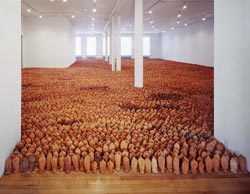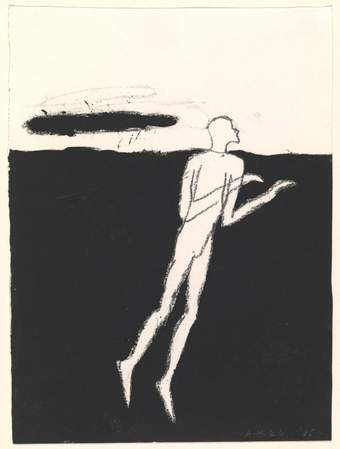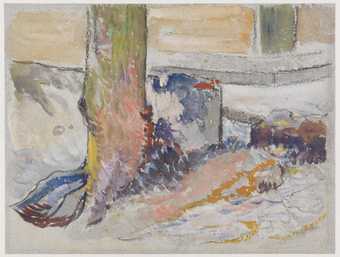
Edmund de Waal Porcelain Room 2002
A Secret History of Clay: From Gauguin to Gormley unearths a little-known history of the use of clay in modern and contemporary art. From the individual ceramic vessel to installation and performance art, clay has been widely used by some of the most innovative artists of the twentieth century. Protean in nature, clay has often been overlooked as a medium precisely for what makes it so attractive to artists. Unfired, clay is messy, it registers every touch. Fired, or simply left to dry, clay is subject to chance beyond the will of the artist.
Clay is also subversive. It is inexhaustible. It is cheap. It is earth. Its familiarity makes it innocuous, enabling it to cross from the private domain into the public sphere and back again. This exhibition traces a narrative that begins with the domestic vessel-based art of Paul Gauguin, and progressively moves away from the private, intimate object to an art that spills into the public domain, ending with the gallery-sized installation, Field, by Antony Gormley on the Second Floor.
What is striking is the extent to which this exhibition is informed by the shape of the vessel, whose history mirrors something of the anxiety surrounding the status of the object in modern and contemporary art. Clay is experienced in the everyday as either a functional object or as a single precious object or ornament. This relationship between the functional and the non-functional, the disposable and the precious, is one theme that emerges in the work of the artists featured in this exhibition.




